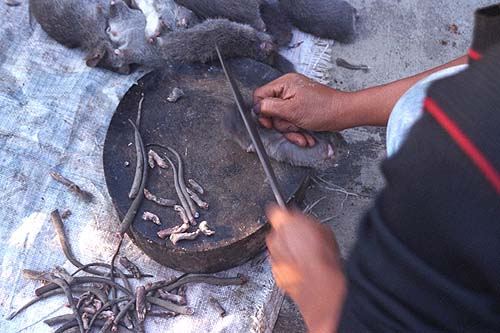
Michael Sheridan, Bangkok
timesonline.co.uk
PARTLY thanks to a Vietnamese ban on eating cats, the arrival of the Year of the Rat last week has been greeted with more than usual relish across Asia.
The rat is not just an astrological symbol of the lunar new year. It is also a delicacy from China through southeast Asia to Vietnam, where the cat ban was introduced in 1998 to help control rodent numbers.
Long a snack for peasants, rat has cornered a market among the sort of consumer who may also enjoy dog, fox, snake, tiger and squirrel, all of which are regularly served on Asian dining tables.
For those who swear by a nice plump rodent, it can be prepared in an infinite variety of recipes.
In Guangdong, a province of southern China, rat may be stir-fried with green peppers or stewed with lotus seeds. In the provincial capital, Guangzhou, local people enjoy rat hotpots in the chilly winter months and gently steamed rat with lemon in the summer.
One restaurant proclaims the merits of rat as a health food, rich in vitamins and minerals. The rat’s liver, gall bladder, brain, eyes, skin and saliva were all recommended.
In 2003, when the gourmets of Guangdong found that many wild animals had vanished from the menu because of fears that they harboured the respiratory disease Sars, one restaurant in the city of Zhuhai was serving more than 100 rodents a day.
Last year there was a plague of rats in central China after engineers at the Three Gorges dam released water that sent some 2 billion rodents fleeing. Many ended up on the dining tables of Guangzhou, netting a tidy profit for local villagers.
In Hanoi, where the winters are foggy and damp, residents favour a broth containing rat hearts and livers.
In Thailand, where a substantial Sino-Thai community was also celebrating the new year, plump country rats are barbecued and sold at roadside stalls.
“It’s not for me,” said Sombat Weeraworn, a Bangkok taxi driver, “I’ll stick to deep-fried beetles.”
PMX TAK LINDUNGI DAN NAFIKAN
4 hours ago



0 comments:
Post a Comment